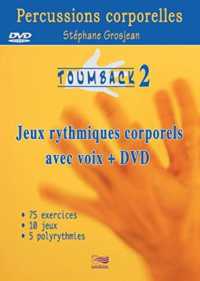Full Description
Get big writing help in a small package with POCKET KEYS FOR WRITERS. Based on the authors' research and experience in the college writing classroom, this book offers everything you need to improve your writing. The sixth edition features three new extended examples to help you build important critical thinking skills that will serve you well in your college writing and beyond. From navigating the research process to understanding the mechanics of writing and using punctuation to finding and documenting print and electronic source materials, POCKET KEYS FOR WRITERS assembles concise and practical information in one clear, easy-to-use handbook that you'll find yourself turning to again and again.
Contents
Part I: WRITING IN COLLEGE.
1. The Writing Process in Context.
Your purpose. Your audience. Your voice. Your use of media. Revising and editing.
2. A Framework for Critical Thinking.
3. Reading and Writing Arguments.
A debatable claim (thesis). Reasons and evidence. Areas of common ground. Visuals.
Model paper 1: A student's argument essay (MLA).
4. Presentation Matters.
How to present your work. Text (color, lists, headings). Photos and images. Data (tables, graphs, charts). Oral and multimedia presentations, PowerPoint, e-portfolios. Multimodal composition.
Part II: RESEARCH: FINDING AND EVALUATING SOURCES.
5. How to Search for Information.
Primary and secondary sources. Starting the search. Starting points. Keyword searching. Visual sources. Google. Digital tools. Online alerts.
6. How to Evaluate Sources.
Reading critically. Evaluating sources. Recognizing a scholarly article.
Part III: USING AND CITING SOURCES: WRITING WITHOUT PLAGIARIZING.
7. Citing Your Sources.
Why, how, and what to cite. Avoiding plagiarism. Keeping track of sources. Bibliographic software, databases.
8. How to Use and Integrate Source Material.
Organization with ideas, not sources. Summarizing and paraphrasing. Quoting. Integrating source citations. Showing the boundaries of a source citation.
Part IV: DOCUMENTING SOURCES.
9. MLA Style.
Index of MLA Style. Basic features. Citing sources. Setting up an MLA list of works cited. Citing sources in an MLA list of works cited. Source Shots. Print books. Print articles. Periodicals in online databases and on Web. Other Web sources. Visual, performance, multimedia, miscellaneous sources.
Model paper 2: A student's research paper, MLA style.
10. APA Style.
Index of APA Style. Basic features. Citing sources. List of references. Print books and parts of books. Print articles (Source Shot 4). Online sources (Source Shot 5). Visual, multimedia, miscellaneous sources.
Model paper 3: A student's research paper, APA style.
11. Chicago Style.
Index of Chicago Style. Basic features. Citing sources. Endnotes and footnotes. Print books. Print articles. Online sources. Audiovisual, multimedia, miscellaneous sources. A student's Chicago bibliography.
Model paper 4: Samples from a student's Chicago research paper.
Part V: THE FIVE C'S FOR CLEAR STYLE.
12. Cut.
Wordiness. Formulaic phrases. References to your intentions.
13. Check for Action ("Who's Doing What?")
"Who's doing what?". Sentences beginning with there or it. Unnecessary passive voice.
14. Connect.
Consistent subjects. Transitional words. Variety in connecting ideas.
15. Commit.
Confident stance. Consistent tone.
16. Choose Your Words Carefully.
Vivid and specific words. Slang, regionalisms, and jargon. Biased and exclusionary language.
17. Revising for Style.
Part VI: COMMON SENTENCE PROBLEMS.
18. FAQs about Sentences.
19. Fixing a Sentence Fragment.
What a sentence needs. Turning fragments into sentences. Beginning with and, but, or. Intentional fragments.
20. Fixing a Run-on or Comma Splice.
Identifying. Correcting.
21. Untangling Sentence Snarls.
Mixed constructions, faulty comparisons, convoluted syntax. Misplaced modifiers. Dangling modifiers. Shifts. Logical sequence after the subject. Parallel structures. Is when and the reason is because. Necessary and unnecessary words.
22. Using Verbs Correctly.
Verbs in Standard Academic English. Auxiliary verbs. Verbs commonly confused. Verb tenses. -ed forms (past tense, past participle). Conditional sentences, wishes, requests, demands, recommendations. Active and passive voices.
23. Making Subjects and Verbs Agree.
Basic principles. Words between subject and verb. Subject following the verb. Eight tricky subjects. Collective nouns (family, etc.). Compound subjects (and, or, nor). Indefinite pronouns (anyone, etc.). Expressing quantity (much, etc.). Relative clauses (who, which, that).
24. Using Pronouns.
Which to use (I/me, he/him, etc.). Specific antecedent. Agreeing with antecedents. Using you. Relative prono








